Slow WiFi speed can be really confusing, rather downright annoying, as there is no single answer to fix it. There are numerous reasons why your WiFi may be working on a speed slower than intended. It could be a problem with the WiFi router, or the Internet itself.
Although it is difficult to pinpoint the exact issue and resolve it, however, fixing the speed of your WiFi isn't impossible. In this guide we will get you through each step to identify and solve slow WiFi speed issue.
Read Also: 802.11ac Wi-Fi Explained – What Is It & Why It’s Cool
Identifying the Problem
Before getting into the fixing business, the first step is to identify where the problem lies. As mentioned before, it can either be your Internet connection or a faulty WiFi device.
In order to find the culprit you will need an ethernet cable. Ethernet cable is usually supplied with the router, so most probably you will already have one. If not, you can buy it (it's just under $5 and there is no specification of type or size), or you can always borrow one from a friend.
The ethernet cable will allow you to directly connect the router to the PC without depending on the WiFi signals. If your connection starts working fine as soon as you begin using an ethernet cable, then the problem is with the WiFi. If it is still slow, then it could be the Internet (or both).
Fixing the Problem with WiFi Signals
In case your Internet works fine with an ethernet cable, you need to solve the problem with the WiFi. Below we have listed different things you can do to fix WiFi problems.
Positioning and Environment is Important
There can be a number of interruptions that could stop signals from reaching your device properly, like walls, objects and even other electronic devices. You should reduce these interruptions between the router and your device. Additionally, the router must be placed at a certain height to ensure proper distribution of the signals.
Make sure there are no electrical appliances near the router. Devices such as microwave, refrigerator, wireless speakers, wireless console controllers and electronic heating system are some of the most common WiFi signal interrupters.
These appliances usually operate at 2.4GHz band, and they interfere with the signals coming from the router that operates on the same frequency. Do keep in mind that reflective material (mirrors) and metal based finishing in walls also reflect/weaken signals.
Positioning is especially important when you don't have a wired broadband connection and you depend on signals from your Internet provider. In such a case, you will have to adjust the router position to get the best signals from your ISP, usually represented by the number of lights.
Create Heatmap for WiFi Signals
While finding the perfect spot for your router, a heatmap of the WiFi signals will definitely be helpful. You can use a third party app that will create a heatmap of your house to let you know how the signals are being distributed in the house. It will also tell you about the points where there are interruptions as well the places where you can get the best signals.
Ekahua HeatMapper is a good tool for this purpose. It does require registration but it will create a heatmap of your WiFi signals for free. If you have a digital map of your house, then it will create an exact heatmap of WiFi signals on that map. Otherwise it can create heatmap over grids that are good enough to understand how signals are distributed.
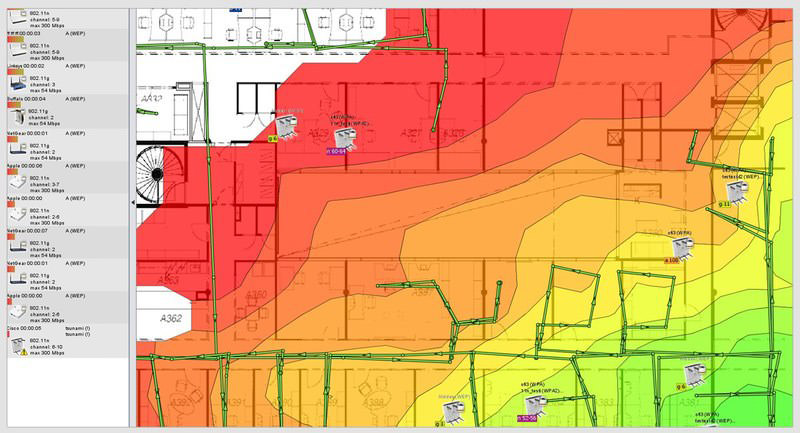

Switch WiFi Channel
WiFi signals are distributed over different channels in a specific area. All the routers in your neighbourhood are distributed over these channels. If a channel is crowded with connections, it could interrupt WiFi signal. You simply need to move to another channel that is less crowded to get better WiFi signals.
For this purpose, WifiInfoView by Nirsoft is a great little utility that will list down information about all the channels in your area, and how crowded they are. You can just choose a new channel that is least crowded.


WiFi On Low Power
Many routers have a built-in option to put themselves on low power consumption to save electricity. During this mode the router uses less power, however, it also decreases the power of the signals.
Unfortunately, some of the routers are by default configured to run in power saving mode and in such a case you have to disable it yourself. In your router settings, look for options similar to "Eco mode", "Low Power Mode" or "Transmission Power" and turn it off or set it to 100%.
Low Power to PC Wireless Adaptor
Similar to the router, Windows operating system may also give less power to the wireless adaptor to save power (usually in power saving mode). This also leads to slower Internet speed over a WiFi connection.
To fix this, press Windows + R keys and type "powercfg.cpl" in the "Run" dialog. It will open up "Power Options" from where you click on "Change plan settings" next to your selected plan, and then click on "Change Advanced power settings".
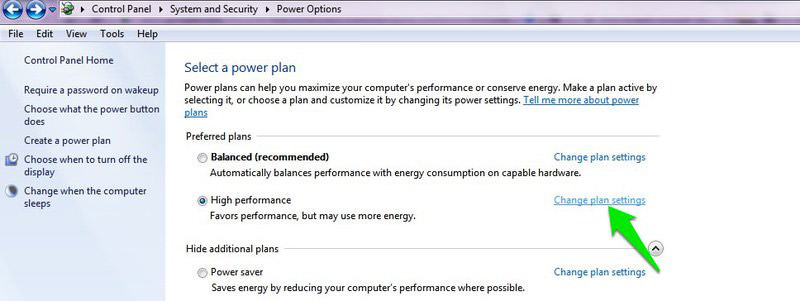

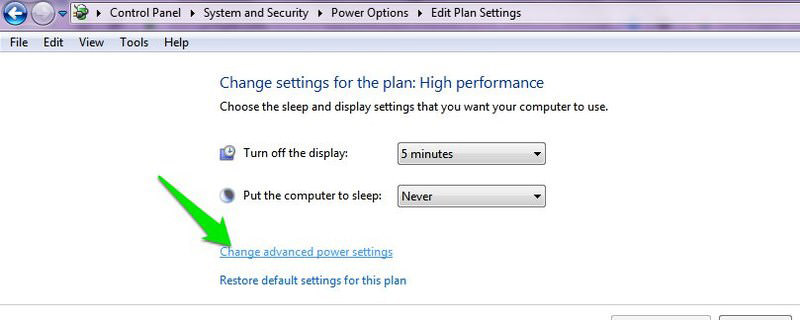

In the advanced power options, expand "Wireless Adaptor Settings" and make sure it is set to "Maximum Performance". This should ensure your network card is getting the power it needs.
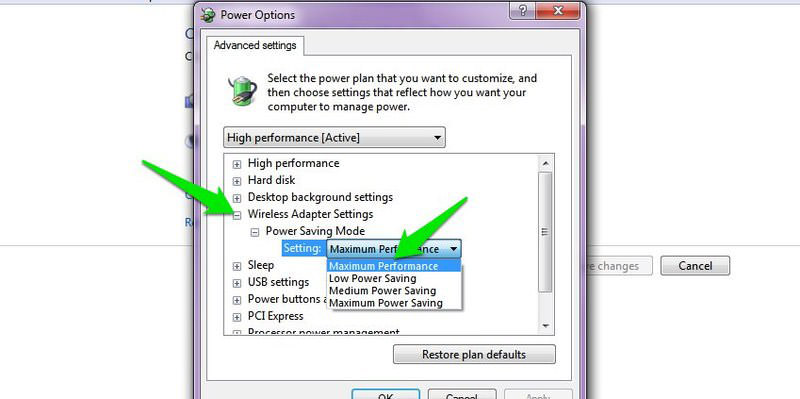

Restart The Router
Have you tried restarting the router? I know it's silly but it could be a simple fix to this problem. A simple fresh start is usually the answer to many Internet related problems. Just completely turn off the router and the modem (if they are separate) and wait for 30 seconds before turning them on.
Reset the Router
If the restart didn't help, then resetting the router to factory settings may solve the issue. There should be a reset button at the bottom or back of the router, usually it's inside a hole. Use a paperclip (or similar object) to push this button and hold it for 15-30 seconds, or until the router reboots.
All your settings will be reset to factory settings and may fix slow WiFi problem if it was due to a wrongly configured setting.
Buy A New Router
That's a cold option, but it is the best one if nothing worked for you so far. The older a router gets the less its power becomes. So getting a new router with more power will definitely help fix slow WiFi problem. You can even ask your Internet service provider to supply you a new router. While you are looking for a new router, try to go for a smart router that can solve all your WiFi related problems.
Fixing the Problem with the Internet
The aforementioned tips are helpful if there is a problem with the WiFi signal. However, if the issue is with the Internet, following things can be done to fix it:
Note: Restarting or Resetting the router is a reliable way to fix Internet problems. So even if you don't have any WiFi problems, do try out these options to enhance your Internet's speed.
Quit Bandwidth Using Applications
Many applications use Internet actively to provide their services in real time. You should monitor Internet usage by turning such apps off. Also, make sure Windows is not downloading any updates in the background as these updates also use a lot of bandwidth.
In Windows, the Task manager is the place to look for processes that may be using bandwidth. Press Ctrl + Shift + Esc to open the task manager and move to the "Processes"tab. You should find all the application processes here. Simply click on the one you don't need or are not using, and then click "End process" button below to close it.
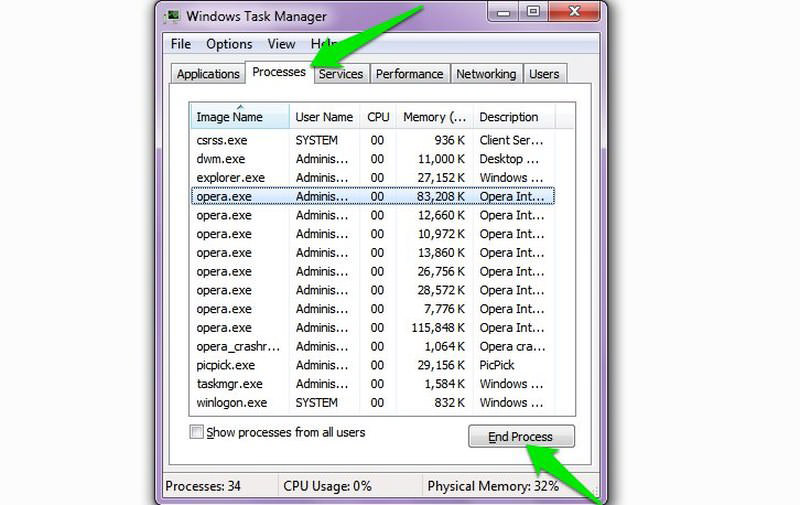

Check Other Devices Using the WiFi
Multiple devices connected to the same WiFi may mean that the connection is being over used causing a reduction in overall Internet speed. The more heavy content a device loads the more bandwidth it will use. So you will definitely not get a good speed on your PC if your brother is watching YouTube videos on his smartphone.
The best way to ensure that bandwidth hogging is not the issue, disconnect all the devices from the network and only use a single device. And when we say "disconnect" we literally mean disconnect, as simply not using the device will still allow background processes to use bandwidth.
Now check on that single device if the connection is working fine. Additionally, make sure that your WiFi is protected with WPA2 encryption to ensure someone else isn’t stealing your bandwidth.
Update Network Driver
An outdated network driver can be one of the factors causing Internet to slow down. Press Windows + R keys and type "devmgmt.msc" in the "Run" dialog to open the "Device Manager". Here right-click on your network driver and select "Update driver software" option.
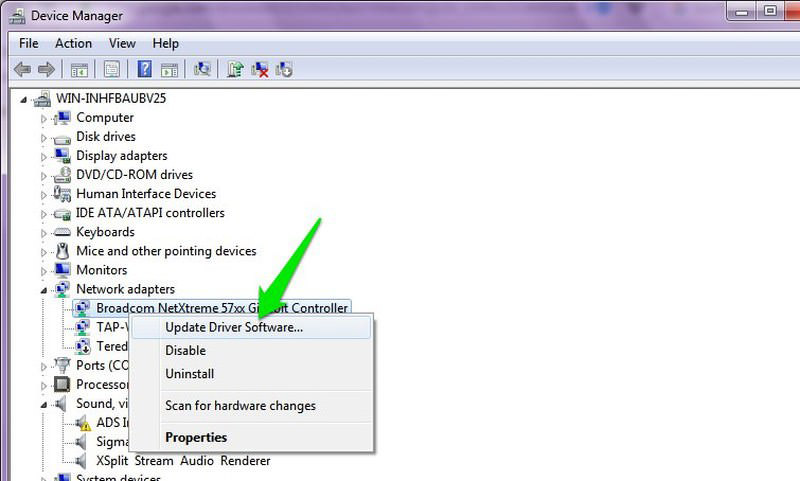

In the next window, click on "Search automatically for updated driver software" and Windows will automatically search and download the right driver.
If this doesn't update the driver, you can use a free third-party application like IObit Driver Booster to update drivers automatically.
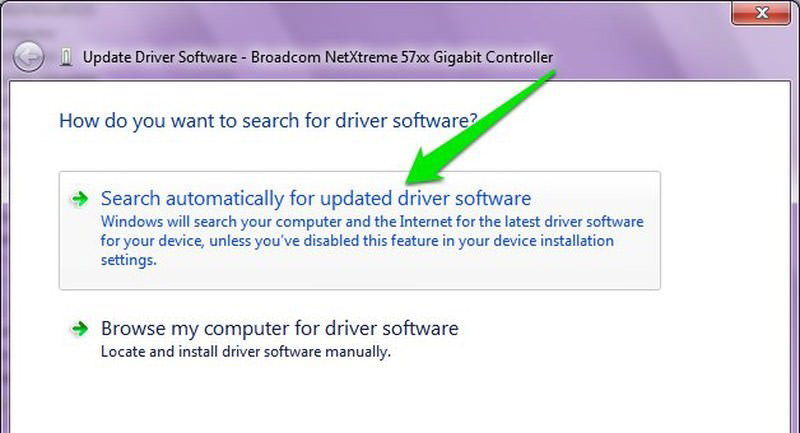

Understand Temporary Internet Slow Downs
If you face slow down at particular times or just started facing slow Internet right now, then it could be a problem at your Internet service Provider's end. Some ISPs can't provide optimum speed during rush hours, so you will just have to deal with slow speeds during that time. In most cases, it is temporary and should resolve in few hours.
Whether the problem is temporary or permanent, it is your ISP's responsibility to ensure a stable Internet connection for its customers. If nothing is working for you, simply call your ISP and tell them the problem. They should be able to inform you what the problem is and may provide the solution.
Top 3 Android Apps to Boost Internet Speed
The holidays are coming and you know what this means — everyone who came home is helping to... Read more
You can even ask your ISP to send an agent to your place to personally check and fix the Internet problem. Most ISPs will be be happy to provide this service. If your ISP resists, try threatening them to move to another Internet service. Perhaps then they should be able to help you.
Conclusion
This article contained comprehensive information on different issues that may cause your WiFi signals to slow down. All in all, I would say that by positioning the router correctly and fixing the problem with your router as well as your computer may solve a majority of issues.
However, like I said before, ultimately your ISP will help you solve any type of Internet related problem (or at least answer it). They would never like their customer to move to another Internet service, therefore they will do anything to fix your slow WiFi problem.
The post How to Fix Slow WiFi Connection appeared first on Hongkiat.
From https://ift.tt/2H0fTCQ, find us on maps: https://bit.ly/31tHUKW
No comments:
Post a Comment